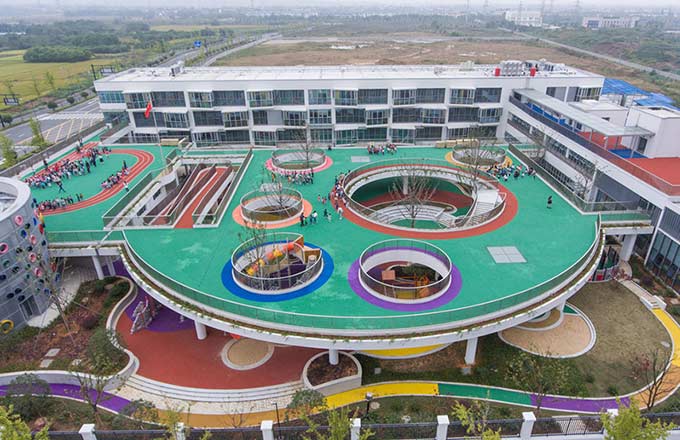Household solar power generation blooms in China
BEIJING - When the previously smog-blurred sun cast its light onto a bizarrely equipped house on Friday, a man who prefers to go by "Ruhai" saw his dream of converting the sun's rays into usable power come true.
Ruhai's three-story house, located in the northern suburbs of Beijing, stands out amongst the rest of the area's dwellings, with thin film solar cells (TFSC) on the walls and a silicon battery on the roof.
For Ruhai, a 42-year-old white-collar worker, Friday was his red-letter day, as it marked his first attempt to connect the mini-PV (photovoltaic) power plant contained within his house to the local power grid.
The house made history in that it became the first distributed PV system with a capacity of ?at least three kilowatts designed and installed by a private individual.
Although it is still being tested, Ruhai's home PV plant can generate 10 kilowatt-hours of power every day, enough for him to power his house for two days.
Ruhai, who professes a dream of becoming the "Steve Jobs" of China's PV industry, said he first saw opportunity in household-distributed PV systems five years ago. He began work on his own system, although his enthusiasm was dampened in 2011, when his application to connect to the state grid was rejected.
"I didn't give up. Perseverance can bring people hope," Ruhai said when recalling the efforts he made at that time.
Ruhai saw a silver lining in October last year, when the State Grid allowed distributed PV plants with a capacity of less than six megawatts to obtain access to the state grid.
He filed an application to the State Grid last November and had the country's first on-grid facility installed in his house one month later.
"I can stand the hassle of explaining to my neighbors who come over to see what's going on here," Ruhai said. "But what I really worry about is whether household PV systems can get the same subsidies as others."
The PV equipment costs Ruhai 14 yuan ($2.2) for every kilowatt of power generated, four yuan more than the costs paid by enterprises, as they are subsidized by the government.
"If I can receive subsidies of 0.4 to 0.6 yuan per kilowatt, I can recoup my investment within eight years," Ruhai said, adding that the return rate is expected to be 9.3 percent, much higher than a bank interest rate.
Ruhai's ambitions go far beyond illuminating one house, however. He said his goal is to promote household PV systems across the country.
Electricity generated by distributed PV plants now accounts for less than one percent of China's total PV generation, compared with some 70 percent in Germany and 80 percent in the United States.
"There is great market potential in household PV systems," Ruhai said.
Distributed PV generation refers to scattered solar power plants installed in neighborhoods that provide power to nearby homes in a more convenient and economical manner than conventional power plants.
The central government said last December that it will encourage the application of distributed PV power generation in local communities.
Solar power, a promising form of green energy, may provide an alternative for the government as it vows to control fossil energy consumption. At the same time, the development of household PV system may also aid PV equipment manufacturers.
China's PV industry, with the world's largest capacity, is facing a sharp decline in demand in the wake of anti-dumping and anti-subsidy measures implemented abroad.
The country's PV industry should shift to the domestic downstream power generation sector to offset their export losses, said Meng Xiangan, secretary-general of the China Renewable Energy Society.
Along with domestic PV manufacturers, residents of China's southern provinces may be able to benefit by installing household PV facilities, as the public heating enjoyed by northerners does not exist in South China, despite cold winters there.
- Insurance payments of solar exports surged 161%
- Solar industry face export challenges
- China to subsidize solar firms
- Solar energy faces obstacles abroad and at home
- Further Chinese investment in domestic PV projects
- Solar trade war brings opportunities for thin-film solar industry
- Solar firms warned on delisting
























